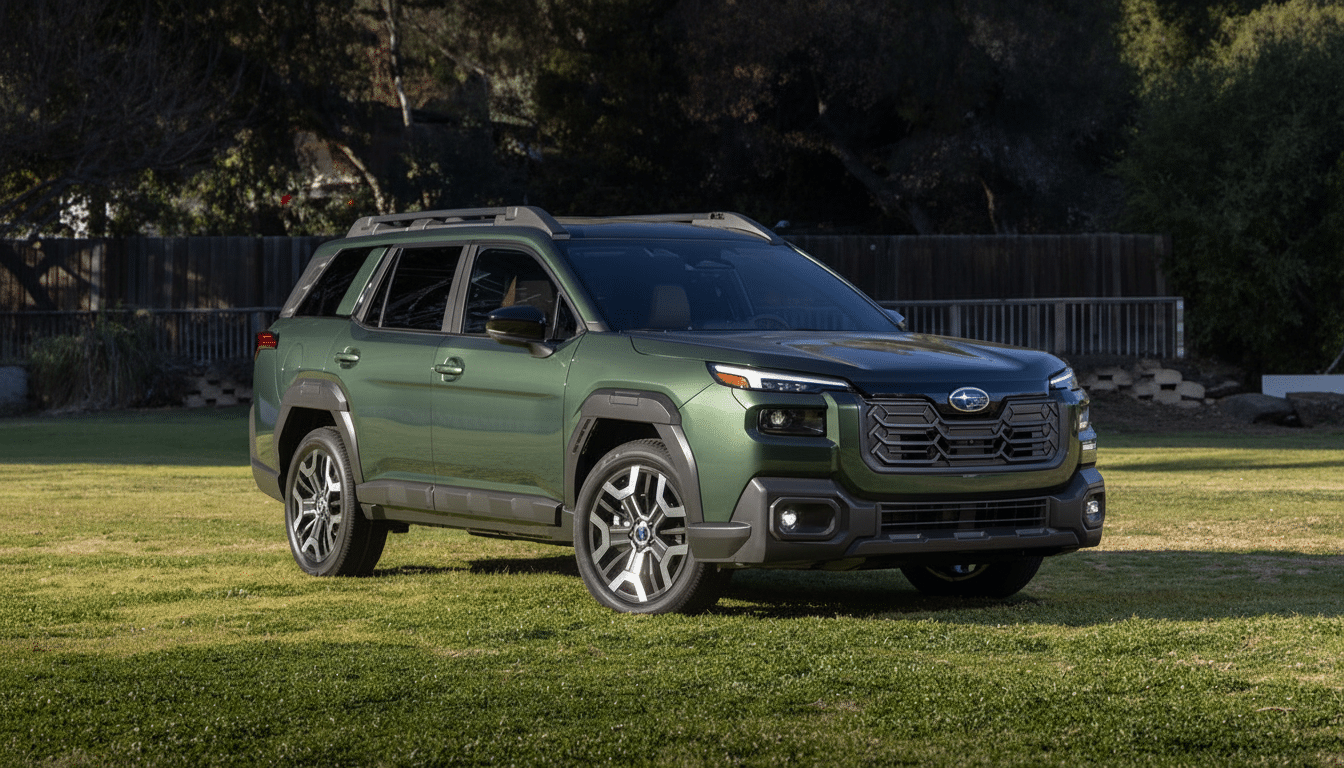Subaru is taking its best-selling crossover in a new direction, with the 2026 Outback slated to get an Android Automotive–based infotainment system powered by a Qualcomm Snapdragon automotive processor. It includes built-in Google services, is more responsive operationally, and can be updated over the air, while still offering wireless Android Auto and Apple CarPlay.
What Subaru Is Changing in the 2026 Outback
Instead of merely projecting phone apps, the Outback’s next-gen system features an embedded operating system from Google. That ensures that Google Assistant, Maps, and certain apps can function even if a smartphone isn’t connected. Subaru had previously employed its own software on a large portrait display; this is the brand’s first model offered with Android Automotive baked in, something the company has discussed with other outlets like Cars.com.

Crucially, Subaru isn’t making me choose between native and projected interfaces. Wireless Android Auto and Apple CarPlay are still up for grabs, providing drivers the option to shift over to their phone-centric layout with no wires whenever they please.
Hardware power and performance upgrades in the Outback
Powering the user interface is a Qualcomm Snapdragon 8 Automotive platform with an Adreno GPU, displayed on a 12.1-inch center display screen. Map swipes are up to 3x faster, audio screen transitions as much as 6x, and general scrolling approximately 2x faster over the previous system, thanks in great part to the infotainment hardware doubling memory and storage (now with 8GB RAM/128GB).
Connectivity enhancements comprise Wi-Fi 5 and Bluetooth 5.2, and a Spectra image signal processor can handle HDR camera feeds with enhanced low-light capabilities—handy for reversing and situational awareness.
These are also the same building blocks Qualcomm provides across its Snapdragon Digital Cockpit portfolio, now embedded in many modern vehicles.
Why Android Automotive matters inside the 2026 Outback
And because Android Automotive is inside the car, it’s capable of linking infotainment and vehicle functions more deeply than phone projection can hope to. In the Outback, the software can control climate settings, seat heating, and drive modes, and hold several user profiles to store preferences and frequently visited destinations. Over-the-air updates ensure that apps, maps, and system software will always be up to date without the need for a stop at the dealership.

For drivers, the big news is hands-free control. Google Assistant can navigate, message, and play media in a natural way that minimizes distraction. Car companies (specifically, Volvo and its electric sub-brand Polestar) that have taken on Android Automotive have shown there’s a place for a voice-first interface with less tapping around, more usability day-to-day.
In Contrast to Rivals’ Software Strategies
Subaru’s approach puts it somewhere between two industry camps. Some brands have already shifted to embedded Google with no phone projection in future models, saying tight control over it can improve reliability. Others, including Tesla, have entirely custom software stacks that don’t rely on Android Auto or CarPlay at all. Embracing Android Automotive while also keeping wireless projection alive positions the Outback as software-agnostic, giving customers a choice of whichever experience they prefer to live with on any particular day.
The calculus is practical. The last few years of J.D. Power’s Initial Quality Study have repeatedly identified infotainment as the No. 1 owner complaint category, and flexibility goes a long way toward eliminating friction. Maintaining legacy phone mirroring with improved speed and voice command systems caters to both ease of access and capability.
What to watch next as Subaru rolls out the system
Subaru terms this rollout its next-generation infotainment suite, a strong indication the architecture will be finding homes other than in the Outback. Assuming the company stays consistent with industry norms, that means feature parity across its vehicles and a slow rollout of new apps through the Google Play system for cars.
The larger question is how fast Subaru taps into the platform’s potential. With contemporary Snapdragon gear, those snazzy navigation moves ought to feel more fluid, camera feeds clearer, and voice commands more responsive. If the execution follows the spec sheet, that would represent a welcome reset for an area where a lot of current owners still wish Subaru had done better than it has.

